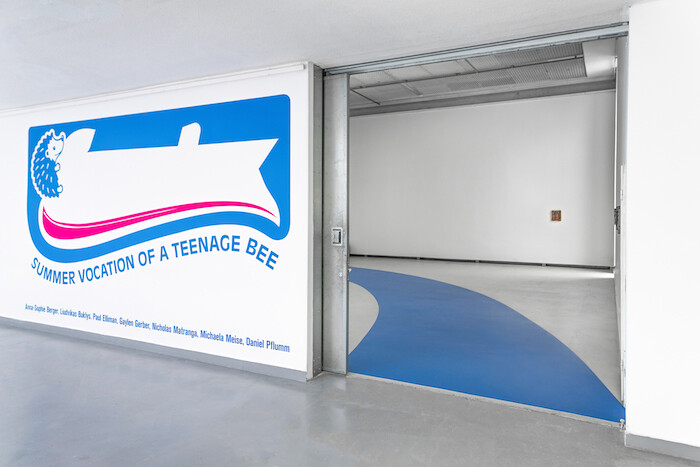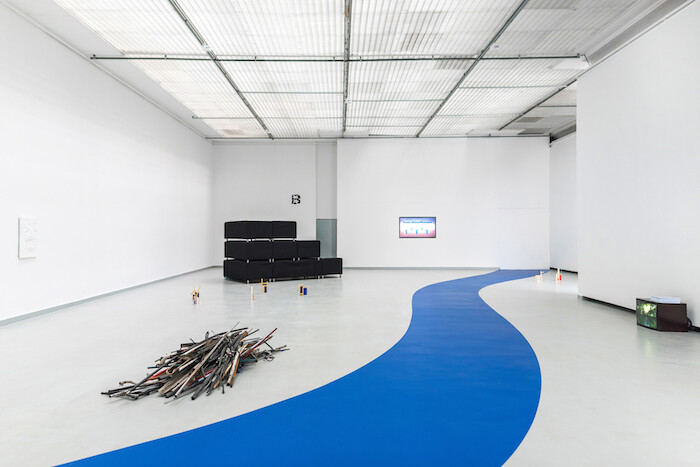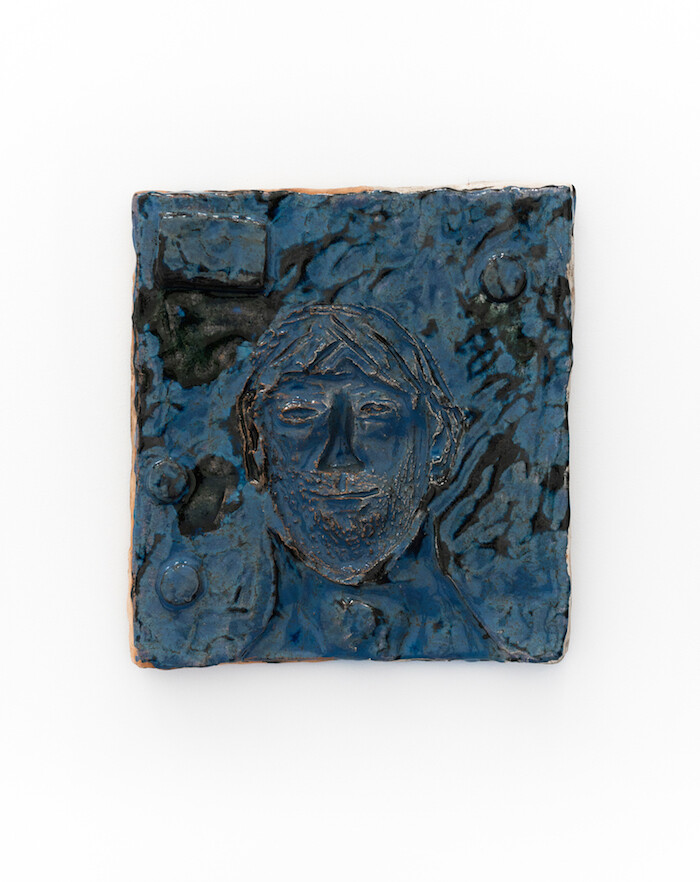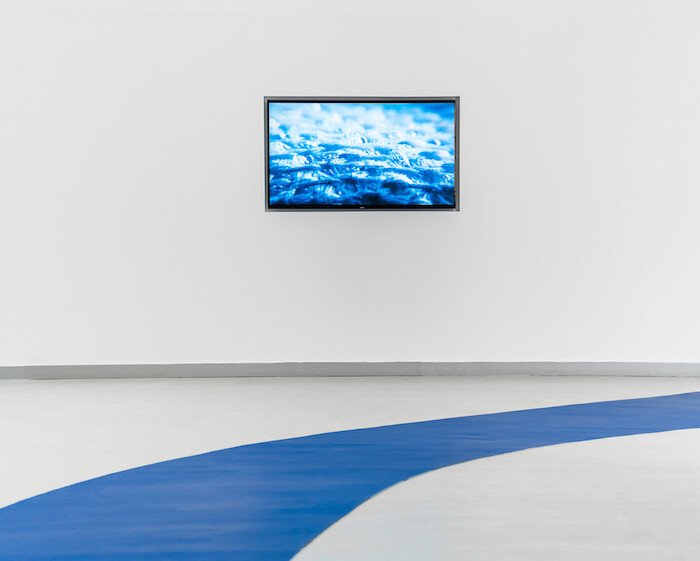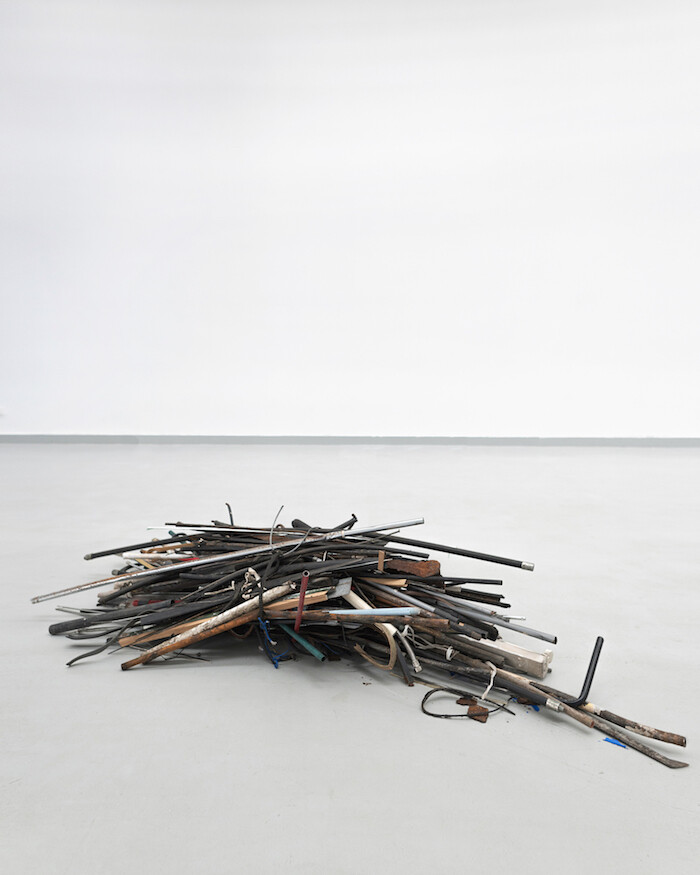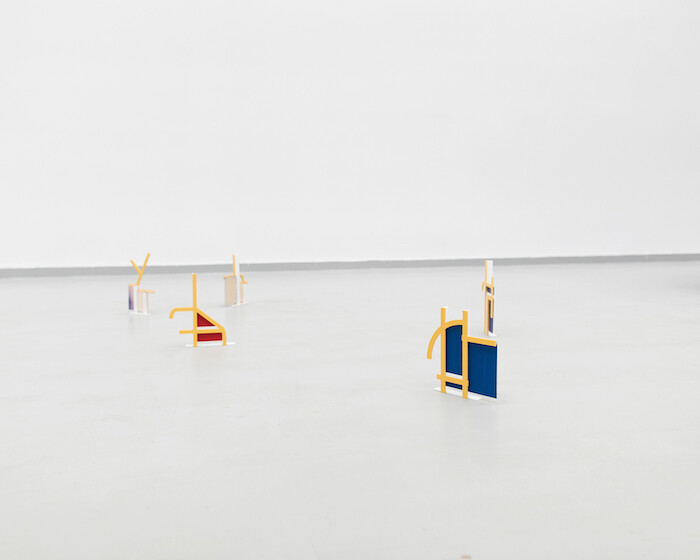The lifespan of a bee, with its strict trajectory and tireless labor, is a common metaphor to describe hard work. It’s a figure of speech that functioned well in the industrial economy, where the individual was diminished to a cog in an endless assembly line, working in and for a factory. But in a postindustrial economy driven by derivatives rather than physical assets, where self-employed individuals are their own harshest bosses and identity is part of self-branding, the principle of thinking outside the box or diverting from a predetermined solutions is enthusiastically encouraged by employers and the “creative class” in general. “The Summer Vocation of a Teenage Bee,” a group exhibition curated by Audrius Pocius and Nicholas Matranga, explores ways to diverge from the economy-driven existence, proposing that art might be one of them, since it is a sort of excessive gesture, wasteful, devoid of intention to directly contribute to the biological survival of the species.
The exhibition struggles to grasp the slippery status of art today, lingering between autonomy and subsumption in the market, by focusing both on how artists operate within the realm of abstracted signs and how they attempt to break existing codes by displacing objects or symbols from their original context. The latter is a Duchampian strategy that is widely employed in contemporary art, but the works in the exhibition build on it, turning to market schemes to explore the transformation of concrete physical things into abstraction, and their further multiplication, circulation, and revaluation. Displayed as a series on the entrance wall are Michaela Meise’s “Money Faces” (2012): a group of small glazed ceramic reliefs naively depicting human faces surrounded by abstracted coins and notes. Multiplied and circulating, like portraits printed on banknotes, the work doubles the anonymity of the represented people, converting them into abstract currency. Another face appears, and is then erased, in Gaylen Gerber’s undated painting Support. Painting in white paint over a nineteenth-century Russian icon depicting Saint George slaying the dragon, Gerber leaves only a silhouette visible. The original value of a widely worshiped figure and the physical icon itself is muted, thus reiterating the logic of the market: the underlying object, the support, is no longer important in the speedy exchange of abstracted values.
This kind of rhythmic velocity follows viewers throughout the exhibition in the form of electronic beats echoing across the space from Daniel Pflumm’s video film Kinder-Country (2018). Displayed on a monitor mounted on a back wall, the video mixes excerpts from dystopian sci-fi films with television advertisements featuring massive explosions, annihilation, and deserted landscapes after catastrophic events. The result is a kaleidoscopic, vertigo-invoking picture of late capitalism, where disasters and catastrophes are equal actors in the market, as are corporate brands. The intermingling of disasters and the economy is also present in Paul Elliman’s sculpture Weather Forecasts/Economic Forecast (1987)—a bundle of random objects, such as copper tubes, pipe hoses, rusty metal plates, and tires the artist collected after a large storm in London on Monday, October 19, 1987—also known as Black Monday due to a sudden stock market crash. In the age of the Anthropocene, climate is an active political and economic agent, but even that can be monetized, like weather derivatives traded on futures markets.
Martin Ebner’s architecture for the show, a blue curvy path wriggling throughout the floor, functions as a visible trajectory (of a teenage bee maybe?) or as an ocean stream affecting and connecting the works placed around it like islands. Some works-islands are related to others, others less so. Anna-Sophie Berger’s large-scale sculpture Lion’s Fate (2018), comprised of a group of IKEA sofas borrowed from the Contemporary Art Centre’s cinema hall, refers to an unbuilt monument for German World War I soldiers buried in Vilnius. This gesture of relocation and re-contextualizing is not directly related to the economy as the other works on view, and thus it stands out—both visually and conceptually. A similarly lonely island is the short video Days of Vision (2018) by Liudvikas Buklys, a mix of found YouTube clips of a group of teenagers walking around parks and fields and talking about trees and plants in a tone mimicking nature documentaries. Their crude filming, with aggressive zooming in and out, and random choices of objects to film—such as tree trunks or leafless branches—create almost uncanny, abstracted graphics. Here, the removal of the footage from its original context generates a more enigmatic and aesthetic experience than the literal market-related references found in the other works in the exhibition.
The exhibition, which speculates as to whether or not artistic gestures and modes of thinking are wasteful in the efficiency-oriented economy we live under, might create space for autonomy and deviation that is urgent and hopeful. However, the works on view seem to be more skeptical than the show as a whole—they reiterate once again the penetrative power of the market, its ability to monetize everything—from people to resistant acts, disasters, and the weather. Monetize, abstract, mute, subsume.
